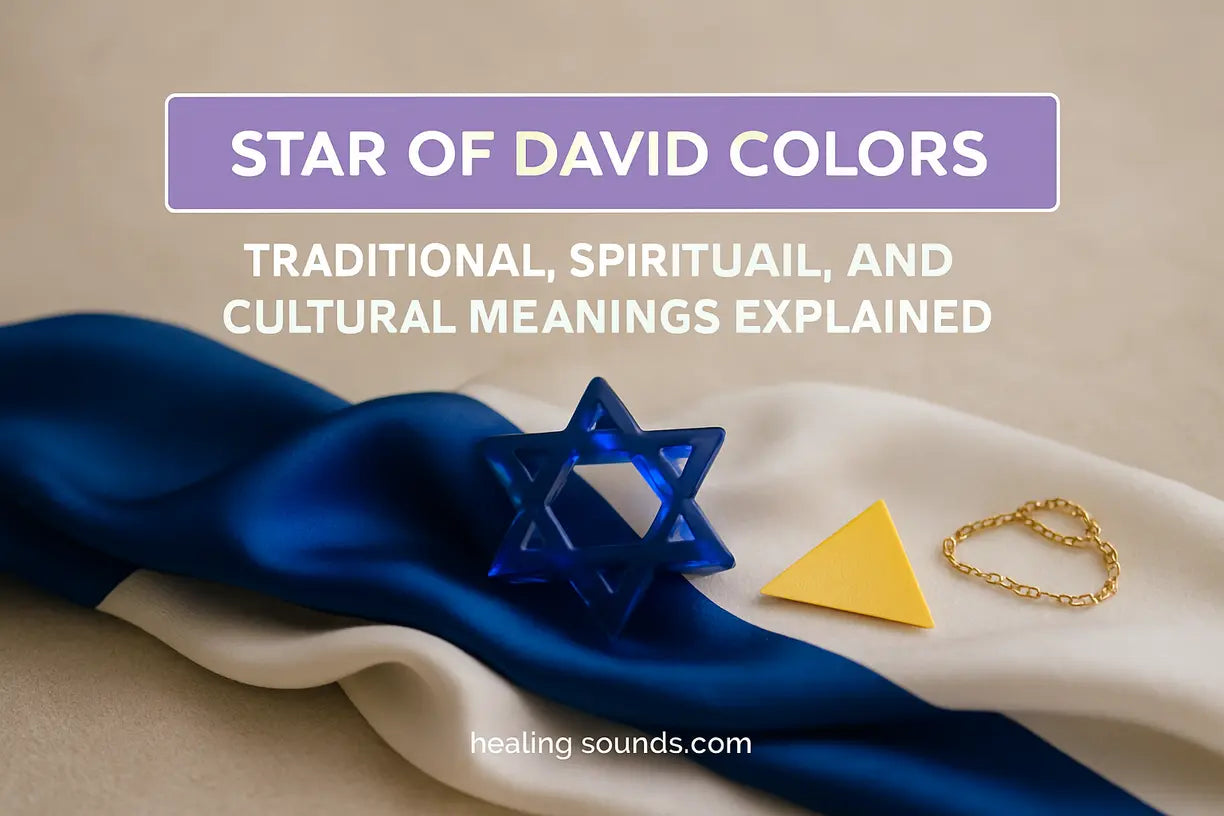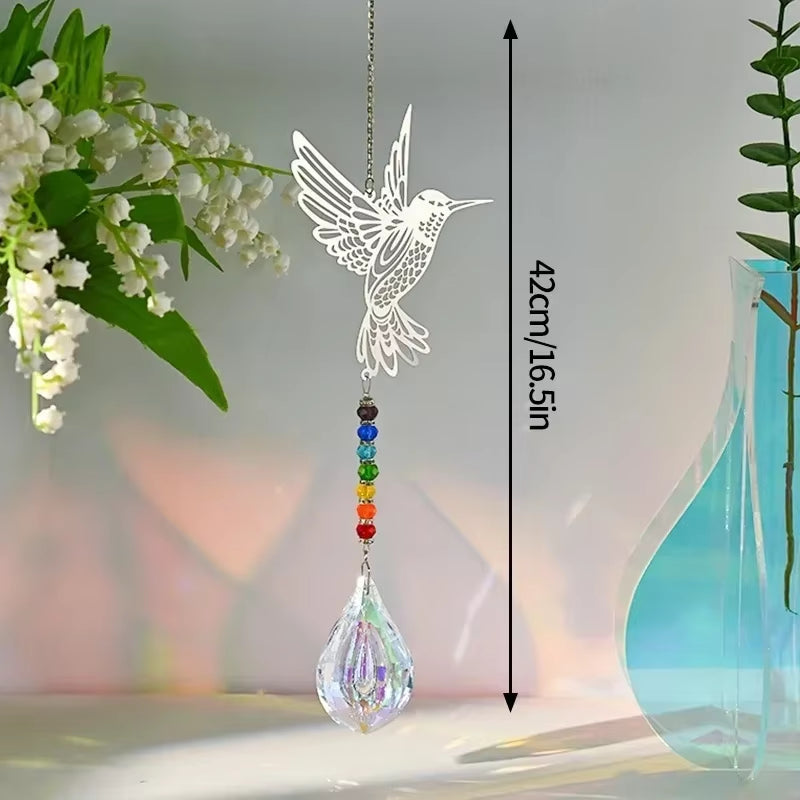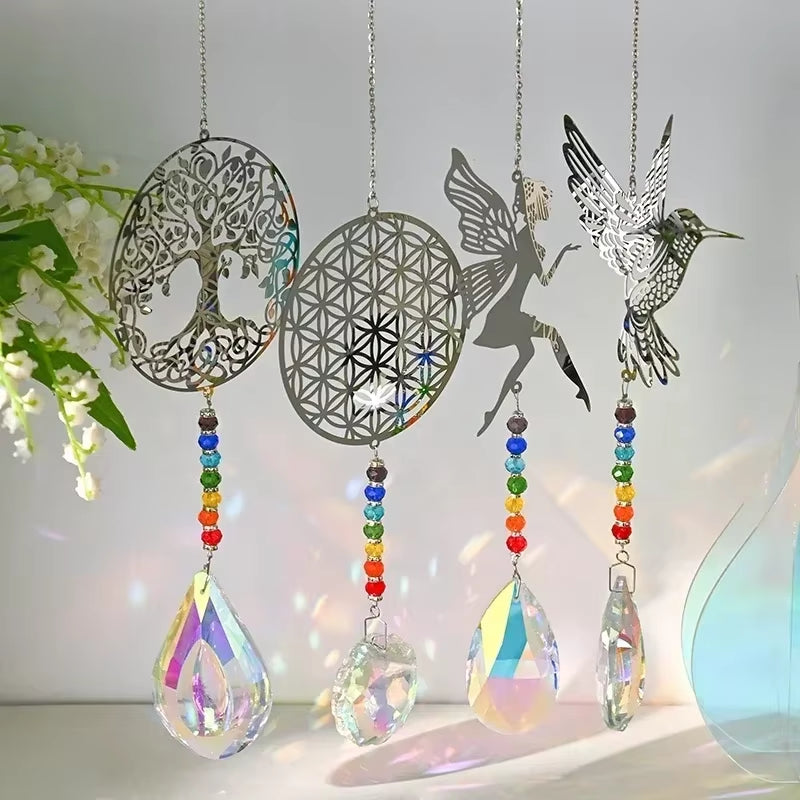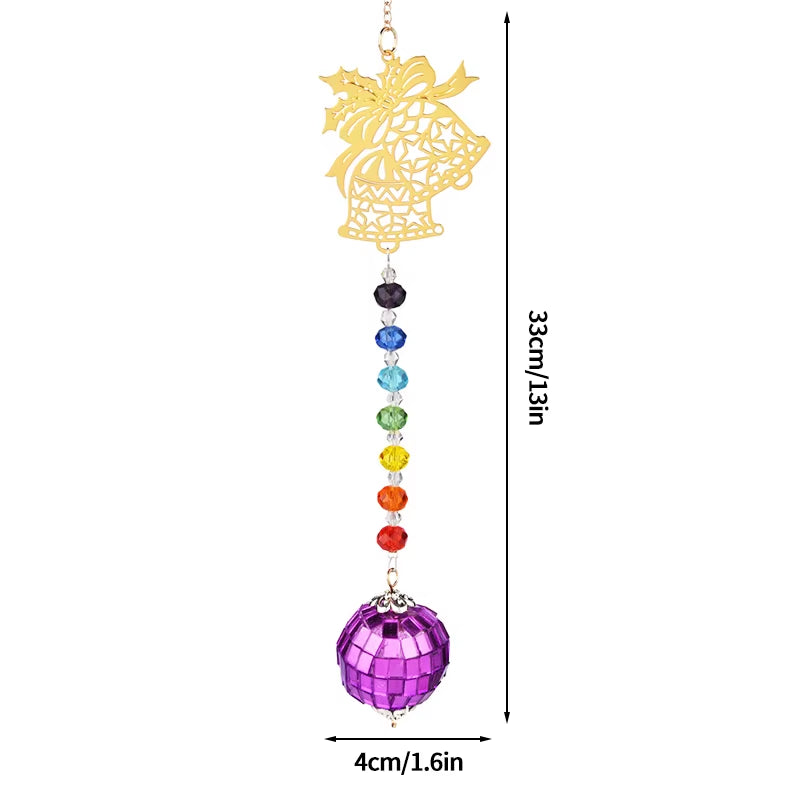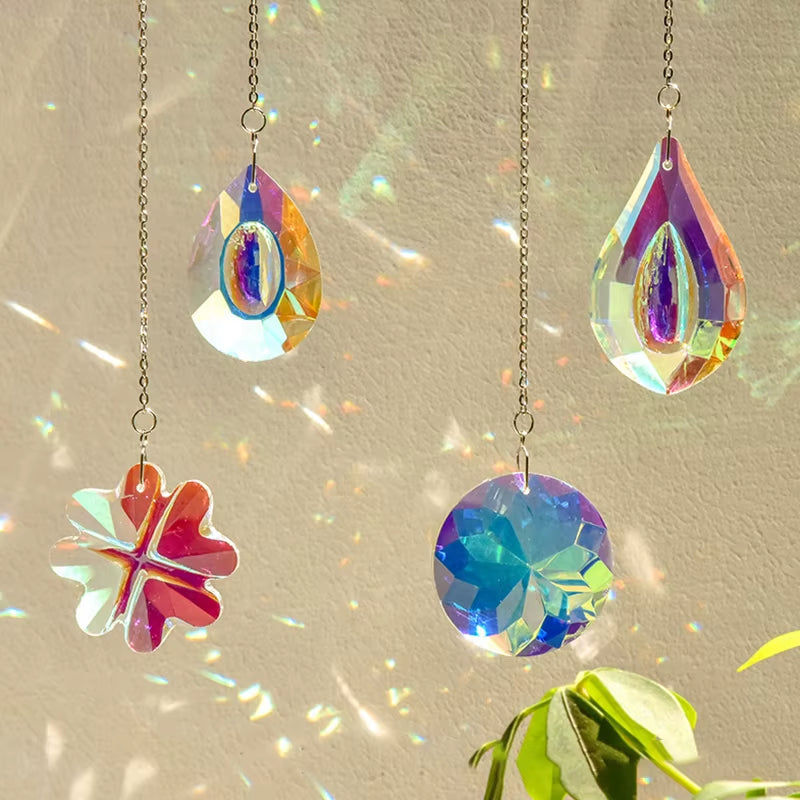Der Davidstern ist eines der bekanntesten Symbole der Welt, ein Hexagramm mit tiefer historischer, kultureller und spiritueller Bedeutung. Seine Bedeutung wird jedoch nicht allein durch die Form vermittelt. Die Farben des Davidsterns verleihen ihm eine kraftvolle Symbolik und verwandeln dieses uralte Emblem in eine Erzählung von Glauben, Kampf und Identität. Ob im ikonischen Blau und Weiß einer Flagge oder im düsteren Gelb der Geschichte – jede Farbe erzählt eine einzigartige und lebendige Geschichte.
Das Verständnis dieser Farbvariationen ermöglicht uns, die Reise des Symbols durch die Zeit besser zu verstehen. Von der göttlichen Inspiration der israelischen Flagge über die schmerzhafte Geschichte der Verfolgung bis hin zur modernen Akzeptanz neuer, integrativer Farbtöne spiegeln die Farben des Davidsterns den sich entwickelnden Geist eines Volkes wider. Dieser Leitfaden erkundet die traditionellen, historischen und symbolischen Bedeutungen hinter jeder bedeutenden Farbe.
Die Bedeutung hinter den Farben des Davidsterns
Während der sechszackige Stern oder das Hexagramm in verschiedenen Kulturen verwurzelt ist, hat sich seine Verbindung zum Judentum über Jahrhunderte verfestigt. Die für seine Darstellung verwendeten Farben sind selten willkürlich. Sie werden gewählt, um bestimmte Ideen, Emotionen und historische Ereignisse hervorzurufen. Vom Himmel bis zur Erde, von Frieden bis Verfolgung – die für den Davidstern verwendete Farbpalette ist eine eigene Sprache, die zentrale Glaubensgrundsätze und das kollektive Gedächtnis vermittelt.

Blau und Weiß: Die Farben einer Nation und eines Glaubens
Die bekannteste Farbkombination für den Davidstern ist Blau und Weiß. Diese Kombination ist nicht nur eine ästhetische Entscheidung; sie ist tief in religiöser Tradition und nationaler Identität verwurzelt und findet sich vor allem auf der Flagge Israels wieder. Die Symbolik ist direkt vom jüdischen Gebetsschal, dem Tallit , übernommen.
- Blau (Tekhelet): Dieser besondere Blauton wird in der Thora erwähnt und soll das Meer, den Himmel und letztlich Gottes Thron der Herrlichkeit widerspiegeln. Er steht für Göttlichkeit, Glauben und göttliche Offenbarung . Er dient als ständige Erinnerung an die spirituelle Dimension des Lebens.
- Weiß: Der weiße Hintergrund symbolisiert Reinheit, Frieden und Licht . Er repräsentiert die gütige und barmherzige Natur Gottes und das menschliche Streben nach spiritueller Reinheit.
Zusammen bildet der blaue Davidstern auf weißem Grund ein kraftvolles Symbol des Bundes zwischen Gott und dem jüdischen Volk. Er spiegelt die Verbindung zum Göttlichen wider und strebt gleichzeitig nach Reinheit und Frieden.

Die Übernahme dieser Farben für die israelische Flagge im Jahr 1948 festigte ihren Status als maßgebliche Repräsentation moderner jüdischer Identität und Souveränität. Das folgende Video untersucht diesen Zusammenhang genauer.
Wenn Sie diese symbolischen Farben in Ihren eigenen Räumen einsetzen, können Sie eine Atmosphäre der Gelassenheit und spirituellen Verbundenheit schaffen. Das sanfte Spiel von Licht und Farbe kann als schöne, tägliche Erinnerung an diese tiefgründigen Bedeutungen dienen.
Windspiel mit Sonnenfänger aus Kristall und Schmetterlingen für draußen.
$3.35
Fügen Sie mit diesem Sonnenfänger aus Kristall einen Hauch von symbolischem Blau und Licht hinzu – ideal für Räume, die vom Davidstern inspiriert sind.
Produkt entdeckenDer Gelbe Stern: Symbol der Verfolgung und Erinnerung
Der gelbe Davidstern nimmt in der Geschichte einen tragischen und eindringlichen Platz ein. Während des Holocaust zwang das Nazi-Regime Juden, ein gelbes Abzeichen, oft in Form eines Davidsterns, zu tragen, um sie für Segregation, Verfolgung und schließlich Völkermord zu kennzeichnen. Die Wahl der gelben Farbe sollte stigmatisieren und wurde im mittelalterlichen Europa historisch mit der Kennzeichnung von Außenseitern in Verbindung gebracht.
Was ursprünglich als Symbol der Schande gedacht war, wurde von der Geschichte jedoch als Symbol der Erinnerung und des Widerstands wiederentdeckt. Heute dient der gelbe Stern als feierliches Denkmal für die sechs Millionen im Holocaust ermordeten Juden. Er ist eine eindringliche Mahnung an die Gefahren von Hass und Intoleranz und ein Versprechen: „Nie wieder!“. Für ausführlichere Informationen bietet das United States Holocaust Memorial Museum umfangreiche Ressourcen zur Geschichte des jüdischen Abzeichens.
Neue und symbolische Farben
Während Blau, Weiß und Gelb die historisch bedeutsamsten Farben des Davidsterns sind, haben andere Farbtöne in der heutigen Zeit an Bedeutung gewonnen und spiegeln die dynamische Natur von Kultur und Glauben wider.
Die Bedeutung des violetten Davidsterns
In den letzten Jahren hat sich der violette Davidstern in bestimmten Gemeinschaften als Symbol etabliert. Obwohl Lila keine traditionelle Farbe ist, wird es oft als Zeichen von Inklusivität und Solidarität verwendet, insbesondere mit der LGBTQ+-Community im Judentum. Es steht für eine Verschmelzung von Identitäten und eine moderne Bewegung zur Schaffung eines einladenderen und vielfältigeren spirituellen Raums. Seine Bedeutung wurzelt eher im zeitgenössischen sozialen Fortschritt als in alten Schriften.

Andere Interpretationen
Gelegentlich kann man den Davidstern auch in anderen Farben sehen, die jeweils eine allgemeine symbolische Bedeutung haben:
- Gold: Steht für Göttlichkeit, Königlichkeit und Kostbarkeit.
- Rot: Kann Leben, Blut, Opfer und Leidenschaft symbolisieren.
- Grün: Wird oft mit Wachstum, Erneuerung und Hoffnung assoziiert.
Diese Interpretationen sind typischerweise persönlicher oder künstlerischer Natur und lassen den tiefen historischen und gesellschaftlichen Konsens der Primärfarben vermissen. Sie zeigen die Vielseitigkeit des Symbols und seine Fähigkeit, für den Einzelnen eine persönliche Bedeutung zu haben.
Werten Sie Ihren Raum mit symbolischem Klang und Farbe auf
$39.99
$49.99
Bringen Sie friedliche Blautöne und uralte Symbolik in Ihr Zuhause und spiegeln Sie die Gelassenheit des Davidsterns durch Klang und Farbe wider. Mehr erfahren ➔
$3.13
Verleihen Sie Ihrer Umgebung beruhigende blaue Kristalle, die die positive und spirituelle Bedeutung des Davidsterns widerspiegeln. Mehr erfahren ➔
Ein Spektrum der Bedeutung
Der Davidstern ist alles andere als ein monolithisches Symbol. Seine Bedeutung ist ein reiches Gewebe aus Fäden unterschiedlicher Farbe, die jeweils ein eigenes Kapitel der Geschichte, des Glaubens und der Identität repräsentieren. Die Bedeutung der Farben des Davidsterns reicht vom göttlichen Blau und Weiß des Nationalstolzes über das eindringliche Gelb der Erinnerung bis hin zum umfassenden Lila der modernen Spiritualität. Durch das Verständnis dieses Spektrums gewinnen wir eine tiefere Wertschätzung für ein Symbol, das weltweit nach wie vor tiefe Bedeutung hat. Die Erforschung dieser Bedeutungen kann unsere spirituelle Praxis und unsere Verbindung zur Geschichte vertiefen.
Häufig gestellte Fragen zu den Farben des Davidsterns
Die traditionellsten und bekanntesten Farben sind Blau und Weiß , wie sie auf der Flagge Israels zu sehen sind. Historisch gesehen wurde Gelb während des Holocaust als erzwungene Markierung verwendet. In der heutigen Zeit wurden andere Farben wie Lila übernommen, um neue Bedeutungen wie die Inklusion von LGBTQ+ zu symbolisieren.
Ja, die Farbe des Davidsterns ändert sich je nach Kontext und beabsichtigter Bedeutung. Er ist nicht auf eine Farbe festgelegt. So ist er beispielsweise auf der israelischen Flagge blau, war für historische Schandzeichen gelb und kann für zeitgenössische symbolische Zwecke violett oder in anderen Farben sein.
Die Farben Blau und Weiß sind vom Tallit , dem traditionellen jüdischen Gebetsschal, inspiriert. Blau (Tekhelet) steht für Himmel, Meer und Gottes Ruhm, während Weiß Reinheit, Frieden und göttliches Licht symbolisiert. Diese Kombination wurde für die Flagge Israels gewählt, um Glauben und nationale Identität zu repräsentieren.
Ein violetter Davidstern ist ein modernes, kein traditionelles Symbol. Er wird meist verwendet, um die Inklusion und Solidarität mit der LGBTQ+-Community im Judentum zu symbolisieren. Die Farbe Violett kombiniert das traditionelle Blau mit dem Rosa, das oft mit der Queer-Pride-Bewegung assoziiert wird, und schafft so ein Symbol für eine gemischte, inklusive Identität.
Auf der Flagge Israels ist der Davidstern blau . Er befindet sich auf weißem Grund zwischen zwei horizontalen blauen Streifen. Diese Farben sind dem traditionellen jüdischen Gebetsschal (Tallit) nachempfunden.

